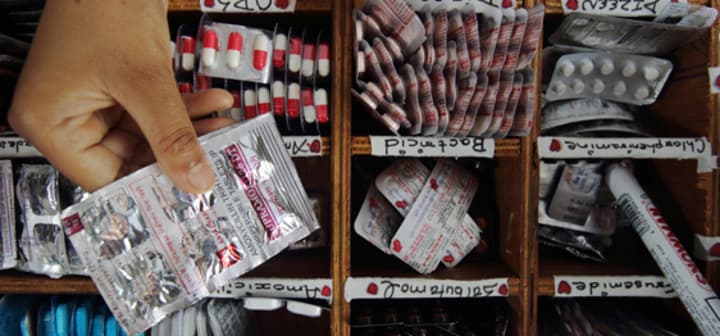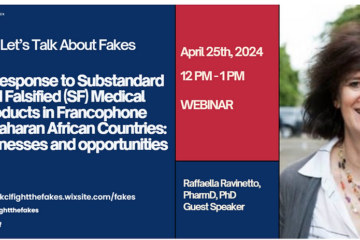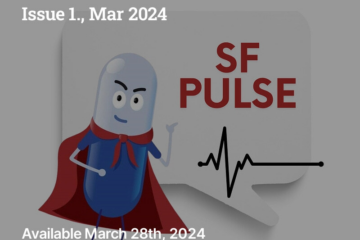This article was originally published in Devex.
#HealthyMeans access to quality medicines
By Ronald Piervincenzi // 17 November 2014

Global health development efforts are finally beginning to pay off in the form of reduced mortality rates and increased longevity. Since the adoption of the Millennium Development Goals, in particular, the global community has made significant strides to improve access to health care services for disadvantaged communities around the world. As a result, childhood mortality rates have been reduced by more than half, HIV and AIDS is considered a manageable chronic disease, and fewer women die in childbirth each year than ever before.
Many of these advances were made by protecting vulnerable populations against some of the most significant threats to their health through innovation in vaccines and medicines. It’s ironic, then, that these important gains are now seriously threatened by a related and worsening problem — one that receives too little attention among the global community.
Counterfeit and substandard drugs result in one million preventable deaths every year. According to the World Health Organization, in some parts of the world as much as 60 percent of available drugs could be counterfeit or substandard, killing nearly 3,000 people daily. The causes are many: Financial incentives are large for deceptive manufacturers; many counterfeit products that find their way to market are intentionally made to look like a legitimate and legal medicine, but contain little or no active ingredients.
But just as often, ineffective medicines are produced by well-intentioned manufacturers who lack the ability to monitor and ensure the quality of their products. Some are made in non-sterile conditions or with poor-quality water, for example. Further, even legitimate medicines are sometimes rendered useless or less potent before they reach the patient because of poor conditions along the supply chain: exposure to high heat, unsafe warehousing practices, or just an inability to get the drug where it is needed before it expires.
The consequences can be dire and exacerbate existing health challenges. For example, around the world each day, 800 women die from preventable complications of pregnancy and childbirth. It’s difficult to know how many of those deaths occur as a result of ineffective medicines to prevent postpartum hemorrhage. However, in a recent study conducted in Ghana, researchers from the Ghana Food and Drugs Authority and the U.S. Pharmacopeial Convention found that more than 90 percent of the two important drugs sampled were non-sterile, counterfeit or expired.
Exposing women to non-sterile or ineffective oxytocin injections to control postpartum bleeding could easily undo the accomplishments of many years and millions of dollars spent by the international development community encouraging women to give birth in formal health facilities with trained health professionals.
This is a perfect example of the importance of the Devex maxim, “Do Good. Do it Well.” Access to a labor and delivery clinic is good. Access to quality and safe medicine at that clinic is good done well.
Some 200 years ago in the United States, we faced a similar problem: Myriad medicines were available to practitioners and consumers, but there was no framework to ensure consistent quality. Some drugs promised miraculous benefits but contained no active ingredient. Others contained too much. There was no consistency or control over how medicines were prepared or compounded — or oversight of labeling and dosage — and patients were being harmed as a result.
USP was convened to address that challenge, and since 1820 has been setting standards for good quality medicines. These standards, which regulatory authorities are welcome to adopt or adapt, are legally recognized in the United States and used by many other countries around the world — giving citizens the confidence that drugs are what they say they are, have been safely handled and should work the way they were intended.
Today, USP is also working to ensure that lower-income countries can develop the same kinds of safeguards against counterfeit and substandard drugs as we’ve helped build here in the United States. In partnership with the U.S. Agency for International Development, we help strengthen national regulatory and quality assurance systems, which helps to ensure access to high-quality medicines. We sponsor our own training and capacity building programs for industry and regulatory professionals from around Africa, conducted in a laboratory training facility we established in Ghana for exactly that purpose.
We are also proud to be part of Fight the Fakes — a bold campaign led by a coalition of more than 20 organizations around the world which are committed to raising awareness of the problem of counterfeit drugs and devising approaches to address it effectively. Successful elimination of this serious threat to global health requires effective cooperation between manufacturers, regulators, the donor community and governments around the world. But it can be done.
There are entirely too many health problems that can’t be solved by a pill or by an injection. But there are many that can. It is therefore absolutely imperative that we protect the advances we’ve made through those innovations — and the massive investment in the surrounding systems needed to deliver them to people around the world.
#HealthyMeans access, but healthy also means access to quality. Once a vaccine or a curative medicine has been developed, tested and proven to save lives, we can and must ensure they do.
Find out more about USP’s quality-related efforts and visit Fight the Fakes to learn more about the campaign and how you can get involved.


